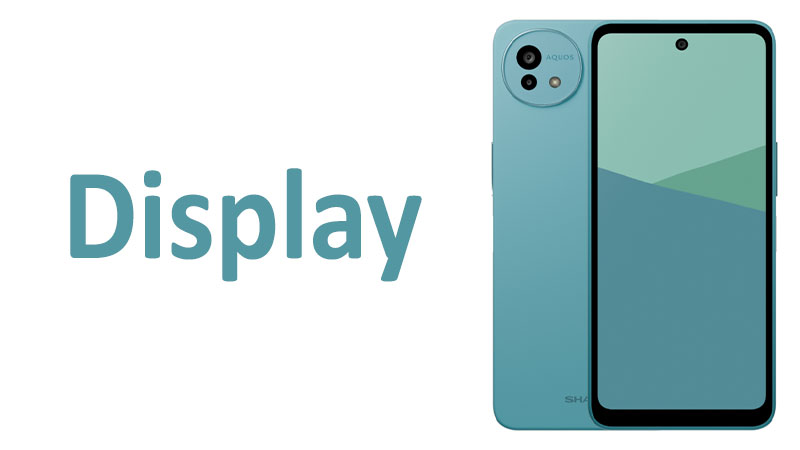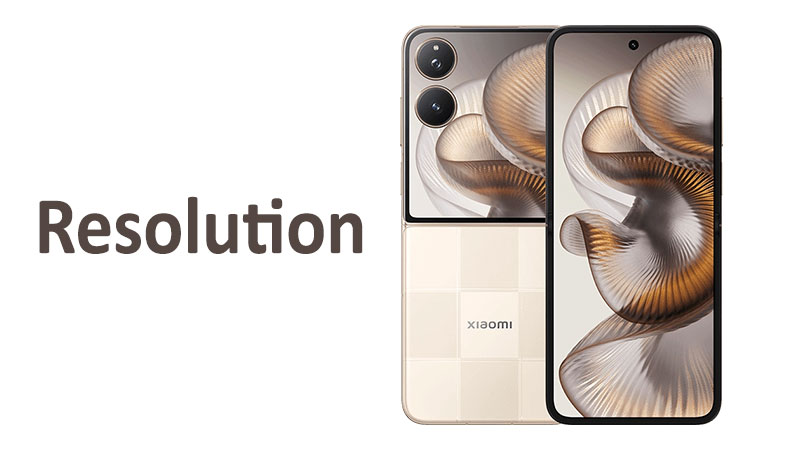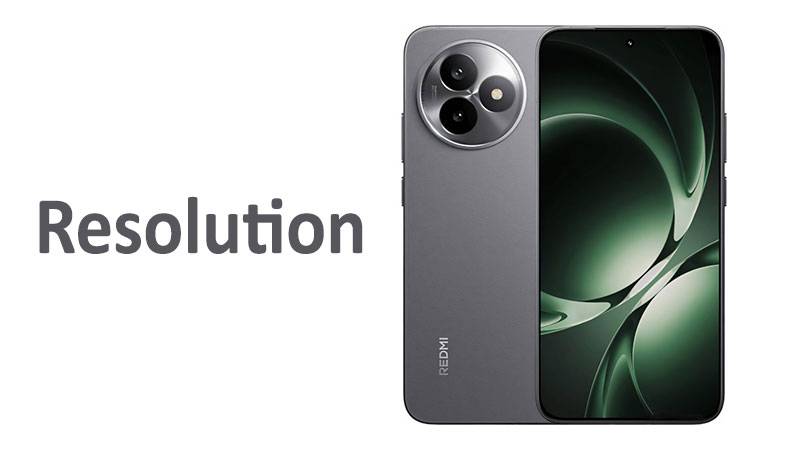The Sharp Aquos wish5 display represents a compelling fusion of modern speed and budget-conscious engineering. Reviewing this screen requires a detailed look at its specifications, which combine an ultra-smooth 120Hz refresh rate with a more modest HD+ resolution. Understanding this balance is essential for consumers in the highly competitive budget smartphone market. This comprehensive analysis will explore the IPS LCD technology, the 6.6-inch physical dimensions, and the real-world implications of its pixel density and high-speed driving capabilities. We guide readers through every facet of the display, ensuring a fully informed perspective on its overall quality and value proposition.
The Core Specifications of the Sharp Aquos wish5 Display
Sharp designed the Aquos wish5 display to deliver core modern features while keeping the overall device affordable and robust. The display’s identity hinges on three main technical pillars: its panel type, its physical size, and its dynamic refresh rate. Each factor contributes significantly to the user’s daily interaction with the device.
Panel Technology: IPS LCD
The Sharp Aquos wish5 utilizes an In-Plane Switching Liquid Crystal Display (IPS LCD) panel. IPS technology is a time-tested standard in the display industry. It is known primarily for its excellent color accuracy and superior viewing angles compared to older Twisted Nematic (TN) panels. This ensures that colors remain consistent and true, even when viewing the screen from a sharp angle.
IPS LCDs do not achieve the perfect black levels or infinite contrast ratios of OLED displays. The wish5 screen relies on a uniform backlight, meaning dark scenes may appear slightly gray rather than pitch black. However, IPS panels typically offer less risk of screen burn-in. They often provide a brighter overall white point, benefiting general visibility. Sharp has optimized this LCD to maximize its inherent strengths in color and viewing stability.
Size and Form Factor: 6.6-inch Immersion
The Sharp Aquos wish5 features a large, approximately 6.6-inch screen. This size places the phone squarely in the category of modern large-screen devices. A 6.6-inch diagonal offers an expansive area for multimedia consumption. Users enjoy comfortable viewing of videos, reading e-books, and navigating complex applications.
The generous screen size directly enhances the experience of mobile gaming. It provides more space for on-screen controls and a better view of the action. However, the size also contributes to the phone’s overall physical footprint. Sharp balanced the desire for a large canvas with the need for the device to remain manageable for one-handed use, particularly for its target audience seeking durable, daily utility.
Screen-to-Body Ratio and Design
The display design achieves a screen-to-body ratio of approximately 82.9%. This metric indicates the amount of usable screen real estate relative to the phone’s total front surface area. A higher ratio means thinner bezels surrounding the screen. The 82.9% ratio is competitive within the budget sector, offering a largely immersive feel without excessive surrounding borders.
The device employs a punch-hole cutout for the front-facing camera, minimizing the obstruction to the main display area. This design choice is contemporary and provides a cleaner aesthetic than older notch designs. The efficient use of the front panel ensures the focus remains on the content. It contributes to the wish5’s modern appearance despite its budget positioning.
Analyzing Resolution and Pixel Density
The display’s resolution and resulting pixel density are the most critical factors governing image sharpness. For the Sharp Aquos wish5, this specification involves a trade-off: utilizing a lower resolution to enhance other features, particularly the high refresh rate and battery life.
HD+ Resolution: 720 x 1612 Pixels
The Sharp Aquos wish5 features an HD+ resolution, specifically 720 x 1612 pixels. This resolution falls below the common Full HD (FHD+) standard (typically 1080p) found in many slightly higher-priced mid-range phones. The 20:9 aspect ratio provides a tall, cinematic view, well-suited for social media feeds and movie watching.
The choice of HD+ resolution serves a distinct purpose in a budget 5G phone like the Aquos wish5. Rendering fewer pixels significantly reduces the burden on the MediaTek Dimensity 6300 chipset and the Mali-G57 GPU. This lower workload translates directly into better system performance, more stable framerates in games, and, crucially, superior power efficiency. The phone requires less energy to drive the display, contributing to its claimed excellent battery life.
The 267 PPI Calculation and Real-World Sharpness
Pixel density, measured in Pixels Per Inch (PPI), quantifies the sharpness of the display. The 6.6-inch screen with 720 x 1612 pixels results in a density of approximately 267 PPI. This figure is a clear indicator of the screen’s budget nature. For comparison, the industry standard for a screen to appear “Retina” or indiscernibly sharp to the average eye is often cited at around 300 PPI and higher.
At 267 PPI, sharp-eyed users may notice slight pixelation or less crisp edges, particularly when examining fine text or complex graphical details. Textures in high-definition images might appear slightly softer. However, for general use, such as scrolling through websites, viewing social media, or watching casual streaming content, the sharpness is generally acceptable. The target user of a robust, eco-friendly budget device often prioritizes fluidity and battery life over absolute pixel perfection. The screen delivers adequate sharpness for daily tasks.
Specialized Comparison: Resolution vs. Competitors
When comparing the Aquos wish5’s resolution to its competitors in the budget 5G segment, the HD+ resolution stands out as a clear differentiation point. Most comparable devices often offer FHD+ (1080p) resolution at the expense of a lower refresh rate, typically 90Hz or 60Hz.
For instance, the immediate predecessor, the Sharp Aquos wish4, featured a slightly smaller screen with similar resolution but a lower 90Hz refresh rate. The wish5 sacrifices higher resolution pixels for a significant upgrade in motion smoothness. This positioning makes the wish5 display unique. It appeals specifically to users who value a lag-free, fluid scrolling experience more than they value razor-sharp detail. This makes the wish5 a notable contender for motion-sensitive tasks and light competitive gaming within the budget market.
The High Refresh Rate Advantage: 120Hz
The most marketable and defining feature of the Sharp Aquos wish5 display is its 120Hz high refresh rate. This technology significantly enhances the perceived speed and responsiveness of the device, offering a flagship-level feature in an affordable package.
Understanding 120Hz Fluidity
The refresh rate measures how many times per second the screen updates its image. A standard smartphone operates at 60Hz, updating the screen 60 times per second. The Aquos wish5’s 120Hz rate means the screen updates 120 times per second, effectively doubling the visual information presented to the user every second.
This increased frequency results in vastly improved motion clarity. Actions like scrolling through lists, browsing web pages, and swiping between home screens appear dramatically smoother and more immediate. Users perceive reduced motion blur, making the entire operating system feel faster and more responsive, even when the processor is only moderately powerful. This smoothness is a major quality-of-life upgrade that is immediately noticeable to any user.
Performance Impact: Gaming and Scrolling
The 120Hz refresh rate has a profound impact on two key user activities: general navigation and mobile gaming. For everyday use, the enhanced scrolling smoothness makes long documents and social media feeds much easier on the eyes. It reduces strain and creates a premium feel that often belies the phone’s budget price.
In the context of mobile gaming, the 120Hz rate is a true asset. Even though the phone utilizes a 720p display, the ability to draw up to 120 frames per second (if the Dimensity 6300 chip can manage it) offers a competitive edge and a better visual experience in supported games. The improved clarity during fast movement allows players to track targets and react more quickly. Sharp leveraged the lower HD+ resolution to ensure the CPU and GPU could actually drive the screen consistently at this higher frame rate. This strategic combination maximizes the display’s functional performance.
Specialized Comparison: 120Hz vs. Previous Models
The jump from the Sharp Aquos wish4’s 90Hz to the wish5’s 120Hz refresh rate is significant. While 90Hz provides a noticeable improvement over 60Hz, the leap to 120Hz offers another substantial step in perceived fluidity. This enhancement is a primary reason to choose the wish5 over its predecessors. Sharp recognized that high refresh rates are now a non-negotiable feature for many modern smartphone users, even at the entry level. They made a clear design decision to prioritize smoothness.
It is important to note that the 120Hz implementation is likely non-adaptive, or fixed. Unlike more expensive phones that dynamically adjust the refresh rate down to 1Hz or 10Hz to save battery (LTPO technology), the wish5 probably maintains a high-speed driving rate more often. This ensures consistent smoothness but requires the large 5,000mAh battery to compensate for the higher power draw.
The 120Hz/HD+ Trade-off: A Key Buying Consideration
The most important aspect of the Sharp Aquos wish5 display is its fundamental design compromise. Sharp effectively traded high pixel density (FHD+) for high motion fluidity (120Hz). Consumers must decide which feature they prioritize.
Users who primarily read detailed text, view high-resolution photography, or demand absolute sharpness for productivity might find the 267 PPI lacking. They should consider an FHD+ display, even if it is limited to 60Hz. Conversely, users who spend significant time scrolling through social feeds, playing casual games, or simply appreciating the overall snappy feel of the interface will find the 120Hz refresh rate a superior benefit. The visual experience feels premium in motion, compensating for the static lack of detail. This trade-off makes the Aquos wish5 a device designed for speed and responsiveness on a budget.
Display Quality: Brightness, Color, and Viewing Angles
Beyond the core specifications of resolution and refresh rate, the practical quality of the display depends on factors like brightness output, color accuracy, and off-axis viewing performance. Sharp optimized these aspects to ensure the IPS LCD performs reliably in varied environments.
Brightness Improvements for Outdoor Visibility
The Sharp Aquos wish5 is marketed with “improved brightness” compared to previous Aquos wish models. This enhancement is crucial for a phone designed for durability and outdoor use, given its IP69 and MIL-STD-810H ratings. High peak brightness allows the screen to overpower ambient sunlight, maintaining readability even under direct exposure.
A lack of sufficient brightness is a common weakness in budget LCD panels. Sharp focused on mitigating this issue to ensure the user can reliably read maps, check messages, or take photos outdoors. While specific nits measurements are typically necessary for a definitive judgment, the promise of improved brightness addresses a key usability concern for users who rely on their device outside.
Color Reproduction and IPS Strengths
The IPS LCD technology provides the Aquos wish5 with naturally accurate color reproduction. IPS panels handle color temperature and saturation well, delivering vibrant yet realistic hues. Users can expect colors to look consistent across the panel, unlike some cheaper displays that exhibit color shift.
The wish5 likely supports a standard color gamut, sufficient for general content consumption. It provides a pleasing visual experience for viewing photos and standard definition video content. Since the phone is aimed at the budget and durability segment, professional-grade color accuracy is not the primary goal. Instead, the focus is on robust and pleasing everyday visuals. The improved clarity and stability of IPS viewing angles are particularly beneficial when sharing the screen with others.
Pros and Cons Summary
The Sharp Aquos wish5 display presents a clear set of advantages and disadvantages based on its specifications. Understanding this balance is key to evaluating its suitability for different users.
The main pros include the exceptional fluidity provided by the 120Hz refresh rate. This feature significantly elevates the user experience above the 60Hz standard. The display also benefits from the wide viewing angles and consistent color accuracy inherent to the IPS LCD technology. The large 6.6-inch screen size is another major benefit for multimedia and gaming.
Conversely, the primary drawback is the HD+ resolution, leading to a low pixel density of 267 PPI. This affects the sharpness of fine details and text. The IPS panel, while good, lacks the perfect contrast and inky blacks of modern OLED screens. Furthermore, the higher refresh rate likely contributes to higher power consumption compared to a 60Hz screen, although the large 5,000mAh battery counteracts this effect.
Crucial Points for Buyers
Potential buyers of the Sharp Aquos wish5 should consider the display within the context of the phone’s overall philosophy. This device prioritizes durability, simplicity, and speed. The display choice reflects this strategy perfectly.
The 120Hz screen is durable enough to withstand outdoor environments, thanks to the phone’s MIL-STD-810H shock resistance and IP69 water and dust resistance. The display is not a fragile, high-cost component. It is a high-speed workhorse designed for longevity and resilience. A buyer should understand they are paying for responsiveness and durability, not for an ultra-high-resolution viewing experience. The wish5 is the perfect choice for someone who needs a smooth, fast interface on a phone built to survive the elements.
Conclusion
The Sharp Aquos wish5 display makes a strategic, consumer-focused compromise. It successfully merges the modern, premium feel of a 120Hz high refresh rate with the affordability and efficiency of an HD+ IPS LCD panel. The 6.6-inch screen provides ample size for immersion, while the 267 PPI pixel density confirms the phone’s placement in the budget category. This combination creates a display experience prioritizing speed and fluidity over absolute visual sharpness. For the target audience—those seeking a resilient, eco-friendly, and fast-feeling device without paying for a flagship screen—the wish5 display is an excellent proposition. Users who value butter-smooth scrolling and responsive gaming will find the trade-off highly favorable, validating Sharp’s approach to delivering core performance where it matters most for daily interaction.
Frequently Asked Questions (FAQ)
What is the maximum resolution of the Aquos wish5 display?
The maximum resolution of the display is 720 x 1612 pixels, which is classified as HD+ resolution.
Is the 120Hz refresh rate always active on the phone?
The 120Hz refresh rate is a key feature, but the phone likely employs some form of variable refresh rate to conserve battery life, activating 120Hz primarily during scrolling and gaming.
Does the Sharp Aquos wish5 use an OLED screen?
No, the Sharp Aquos wish5 uses an IPS LCD screen, which is generally known for better color consistency and wider viewing angles than older display types.
How does the wish5 display compare to the previous Aquos wish4?
The Sharp Aquos wish5 display is larger at 6.6 inches and features an upgraded 120Hz refresh rate, a significant step up from the 90Hz panel found in the Aquos wish4.
Is the 720p resolution noticeable during daily use?
While dedicated users may notice the lower pixel density (267 PPI) when reading small text, the smoothness of the 120Hz refresh rate often makes the screen feel premium for general daily activities and motion-based tasks.



